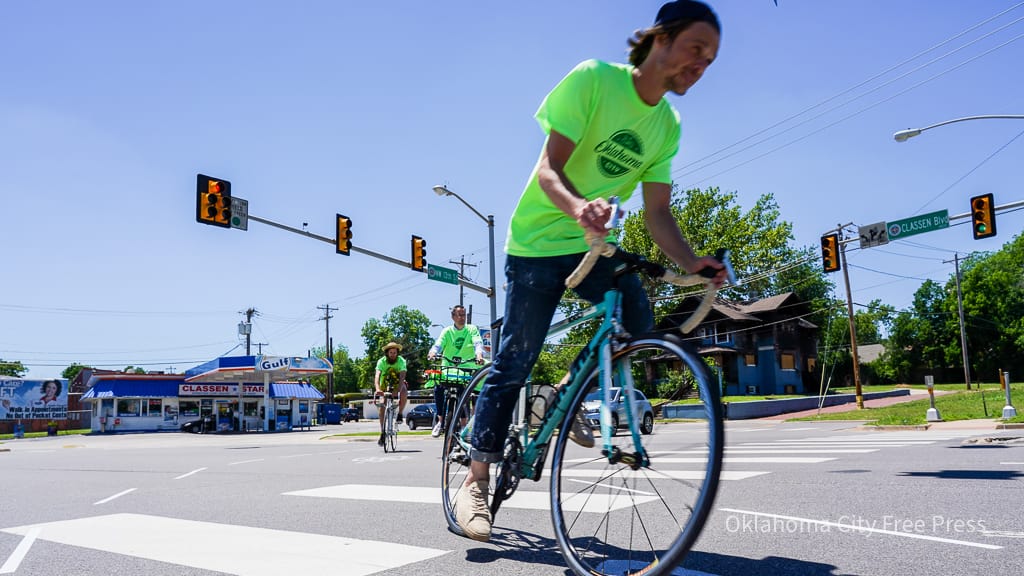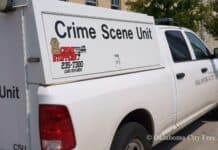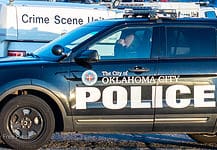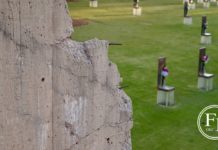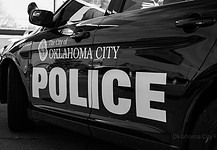Last Updated on August 6, 2023, 2:52 AM | Published: October 29, 2022
OKLAHOMA CITY (Free Press) — As numbers remain high for pedestrian deaths and cyclist crashes on Oklahoma City streets, advocates within the walking and biking communities say that city government efforts to increase road safety are coming up consistently short.
Even with the City Council’s adoption of a “master plan” for improving safety in the form of BikeWalkOKC, and the passage of the nearly $1 billion Better Streets, Safer City bond initiative, residents that have pushed for increased safety measures say city engineers and stakeholders are still prioritizing car traffic.
“Despite the moniker of Better Streets, Safer City, the paradigms of car supremacy are still strong in most city projects,” said BikeOklahoma Government Chair and biking activist Anthony Carfang Jr. “The choices of those designs may be grounded in archaic and demonstrably unsafe standards that leadership fears deviating from, and result in our streets not becoming safer.”
Car dominance
The car-dominated mentality that Carfang sees across the city has caused problems for attempts to implement the BikeWalkOKC “master plan” that the City Council and City Planning Commission jointly adopted in 2018.
Rather than a specifically funded city bond measure, BikeWalkOKC is a comprehensive set of plans and goals for how the city can better allocate funds to address street safety for non-motorists. By approving and adopting the plan, the City Council intended to broadcast to residents that improving walking and biking safety would be a priority going forward in their decision-making.
Those intentions have not always resulted in a consensus of approach, however, especially where there stands to be a disruption of car traffic.
“The 39th Street District project was focused on walkability and safety, and as part of a major corridor in the BikeWalkOKC master plan, it called for protected bike lanes,” Carfang explained. “With community outreach, business owner voices dominated with statements of how they don’t bike to the area and claiming their customers don’t. So they demanded to maximize parking. Long story short, even though the city spent money creating a well-designed plan of connected bike network, they acquiesced.”
The result on 39th Street, as well as all across the city, was to create a number of “sharrows,” shared-marking streets including full lanes usable to cars, but with a portion of the curbside lane designated for cyclists with no barriers or partitions. If no cyclists are present, then motorists still have full use of the lane.
Ward 6 City Council member JoBeth Hamon – an avid cyclist herself – says that a sharrow is far from the ideal solution for cyclist safety.
“I think about a project on Villa where when you hit South 23rd on Villa, it just turns into sharrows,” she said of a recent project informed by the BikeWalkOKC plan. “And we thought ‘can we do anything else to try to make this safer? Does it even still feel safe for people on bikes to keep going down Villa when it just turns into a sharrow instead of a dedicated or protected bike lane?’”
Elsewhere in the city, Carfang claims that engineers are disregarding bike-focused elements of the plan altogether in favor of preserving car traffic.
“On Portland between NW 10th and 19th, engineers suggest that the bike lanes in the BikeWalkOKC master plan aren’t necessary because bicyclists could just go a half-mile over to the Will Rogers Trail, which is a whole mile out of their way,” he said. “But there’s no similar mention that drivers could go a half-mile over to drive down I-44.”
Better Streets, Safer City
Approved by the city in 2017, the mammoth Better Streets, Safer City project takes the form of a nearly $1 billion bond initiative, with more than $750 million focused on improvements for OKC roads, trails, and sidewalks.
A look at the roughly 400 projects included in the initiative, covering the whole of Oklahoma City, shows an overwhelming majority focused on resurfacing city roads for driving.
By contrast, just over 40 of the listed projects are focused on creating or improving walkable sidewalks, and only 12 are intended to create or improve bike lanes.
In many cases, the listed projects are the result of area property and business owners deciding what improvements they would like to see in their district.
‘Cognitive dissonance‘
“The Better Streets, Safer City street enhancement project for Automobile Alley had [an open meeting for] stakeholder input to set values for the project and pedestrian safety was far and away the number one priority,” said BikeOklahoma Government Chair and local biking advocate Anthony Carfang Jr.
“However,” he continued, “the city is spending money to take away two feet of sidewalk space so that parking spots can become two feet larger ‘to accommodate the increasing size of vehicles we see in our area.’ The cognitive dissonance was astounding.”
Since the initiative’s approval in 2017, more than half of the 40 sidewalk-focused projects are already listed as “completed,” with pedestrian deaths in the city still matching multi-car crash deaths throughout 2022.
Only 1 of the 12 planned bike lane projects – a route on North Shartel connecting to the Deep Fork Creek Trail through Zachary Taylor Park – has been completed.
“There are obviously things happening,” Hamon said, “It just feels very slow.”
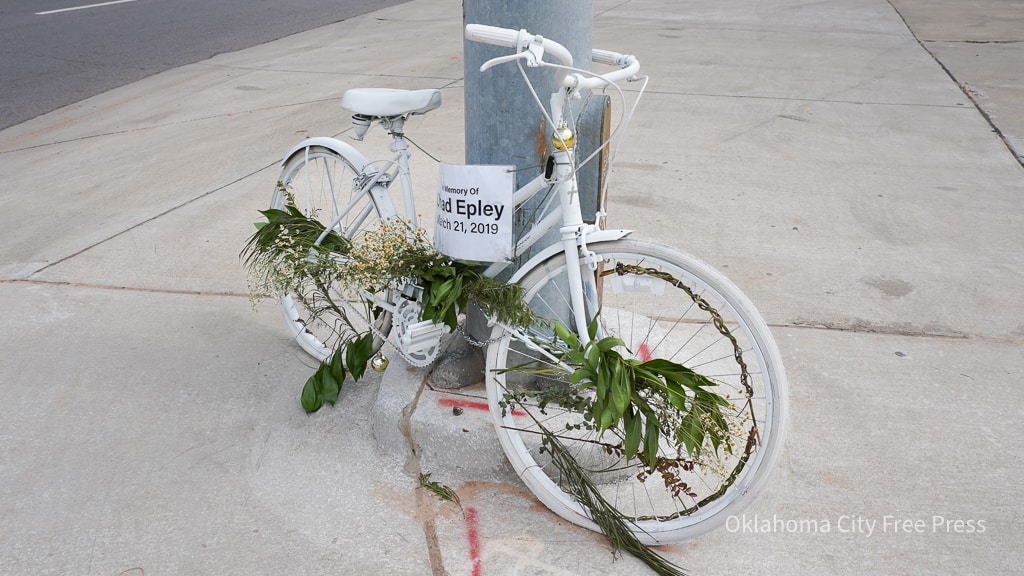
‘More accessibility‘
Not all pending road projects in the city have avoided disrupting car traffic, however.
A planned 2023 overhaul of the Uptown stretch of NW 23rd Street – the result of a separate voter-approved bond initiative – is set to fully shut down and block the consistently busy main drag in favor of removing medians, widening sidewalks, and creating a safer, better protected pedestrian experience.
When interviewed by Free Press in July ahead of the Uptown 23rd District’s Uptown Outside block party, Uptown 23rd Association President Chelsea Banks admitted that part of the outdoor street festival’s appeal was helping to prime city drivers for next year’s extended road closures on the street.
Her hope is that the impending closure and roadwork can prove to some city residents that a fully developed community culture is better built by walkability and foot traffic than by an adherence to car-oriented infrastructure.
“The true nature of growth is more accessibility by foot and by bike because there will just be more people and we’re running out of physical space,” Banks told me. “We have a lot of options to build up or to build sideways, and there are a lot of other places to be building or to be creating spaces for humans. We need more of that space on the street to do just that.”
Brett Fieldcamp has been covering arts, entertainment, news, housing, and culture in Oklahoma for nearly 15 years, writing for several local and state publications. He’s also a musician and songwriter and holds a certification as Specialist of Spirits from The Society of Wine Educators.
